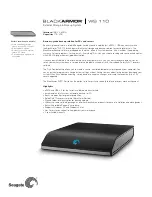
Using Help
|
Contents
|
Index
Back
330
Adobe InDesign Help
Trapping Color
Using Help
|
Contents
|
Index
Back
330
Adjusting ink neutral density values
You can adjust the ink neutral density (ND) values that the selected trapping engine uses
to determine the precise placement of traps. The default ND values for process inks are
based on the neutral density readings of process ink swatches that conform to industry
standards in different parts of the world. The language version of InDesign determines
which standard it conforms to. For example, the ND values for the U.S. English and
Canadian versions of InDesign conform to the Specifications for Web Offset Publications
(SWOP) solid ink density values published by the Graphic Arts Technical Foundation of
North America. InDesign lets you adjust process ink neutral densities to match printing
industry standards in other parts of the world.
The trapping engine derives the ND values for a spot color from its CMYK equivalent. For
most spot colors, the ND values of their CMYK equivalents are accurate enough for proper
trap creation. Spot inks that are not easily simulated using process inks, such as metallic
inks and varnishes, may need their ND values adjusted so that the trapping engine can
trap them correctly. By typing new values, you can ensure that an ink that is observably
darker or lighter is recognized that way in InDesign; the appropriate trap placement is
then applied automatically.
You can get the appropriate neutral density value for a given ink by asking your
commercial printer. The most accurate method of determining an ink’s ND value is by
measuring a swatch of the ink with a commercial densitometer. Read the “V” or visual
density of the ink (do not use process filters). If the value differs from the default setting, type
the new value in the ND text box.
Note:
Changing the neutral density for a spot color only affects how that color will trap. It
does not change the appearance of that color in your document.
Follow these guidelines when adjusting ND values:
Metallic and opaque inks
Metallic inks are usually darker than their CMYK equivalents,
while opaque inks obscure any ink beneath them. In general, you should set the ND values
for both metallic and opaque spot colors much higher than their default values to ensure
that these spot colors won’t spread.
Note:
Setting an ink to Opaque or OpaqueIgnore in the Edit Trapping Inks dialog box
prevents an opaque ink from spreading into other colors, unless another opaque ink has a
higher ND value.
Pastel inks
These inks are normally lighter than their process equivalents. You may want
to set the ND value for these inks lower than their default values to ensure that they
spread into adjacent darker colors.
Other spot inks
Some spot colors, such as turquoise or neon orange, are significantly
darker or lighter than their CMYK equivalents. You can determine whether this is the case
by comparing printed swatches of the actual spot inks to printed swatches of their CMYK
equivalents. You can adjust the spot ink’s ND value higher or lower as necessary.
















































